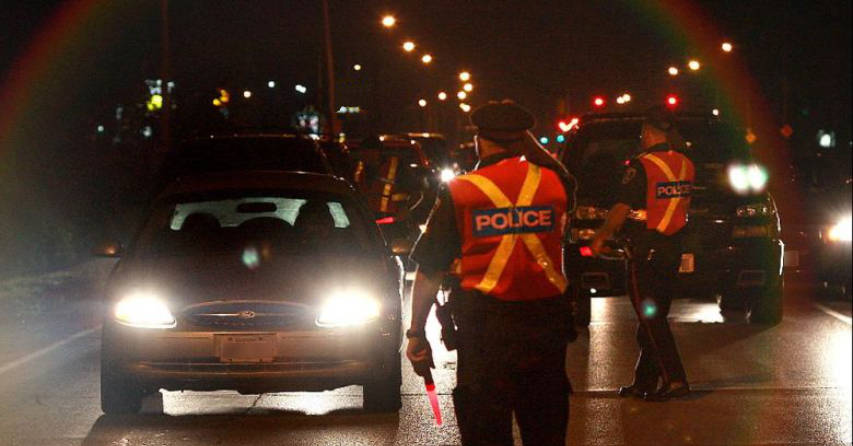
It’s five o’clock on a Friday afternoon and your work week has finally ended. It’s been a long and stressful week – but you were able to meet your deadlines. Someone in the office shouts, “it’s time for a drink!” and you all agree to meet at the pub.
That first drink tastes great and doesn’t last too long; a second round is ordered. This is your last one however, as you never have more than two when you know you’ll be driving. You down that drink and check your watch – it’s 6:30 and time to go home. You stand, wish everyone a great weekend and walk to the exit. You have no idea that the local police unit has set up a vehicle spot check just around the corner.
When you make your turn and see the flashing lights, you’re automatically struck with fear. “Don’t worry,” you say to yourself, “everything will be fine.” Besides, you only had two drinks.
You pull up and join the lineup of cars that slowly move through the spot check. A few minutes later, the car in front drives away and you’re signaled to pull forward. As the officer approaches your vehicle, you lower your window. He leans into your vehicle and announces, “we’re conducting a RIDE program this evening. Have you had anything to drink?”, “Yes,” you reply with honesty, “I just had a couple of drinks with my colleagues.”
The officer points to the curb and instructs you to pull over there. When he approaches your vehicle, he asks you to put it in park, turn off the ignition and exit the vehicle. Looking into your eyes, he says: “You have admitted to consuming alcohol and I can smell alcohol on your breath. Therefore, I’m requesting that you take a roadside breathalyzer test.”
You follow him to his vehicle and he opens the trunk. Removing a package, he says: “This is a portable breathalyzer unit; which will confirm if you’re ok to drive.” He pulls out the unit and says: “When I instruct you, you need to take a deep breath and continuously blow into this until it beeps. Do you understand?” You nod your head, and he continues: “Ok, here we go. Remember to keep blowing until you hear the beep.” You take a deep breath and start to blow in the unit.
The Criminal Code of Canada prohibits driving while impaired to any degree, by drugs, alcohol, or a combination of both. A conviction is a Federal criminal offence, and along with a criminal record, drivers will also receive license suspensions and fines. They may also incur legal costs and higher insurance premiums.
Although the numbers have steadily improved over the years, many Canadian drivers still don’t understand the dangers of drinking and driving, as it’s the leading criminal cause of injury or death, according to the Department of Justice. In 2017 alone, there were more than 69,000 impaired driving incidents reported by the police, including nearly 3,500 driving incidents due to drug impairment.
In addition to impaired driving, you can also be charged with other offences, depending on the levels of alcohol, cannabis or drugs in your system. In Ontario, you are prohibited from driving with a blood alcohol concentration (BAC) of 80 milligrams or more per 100 milliliters of blood. This offence is often called “driving over point eight”.
There is zero tolerance for drivers age 21 or under and for novice drivers of any age (G1, G2, M1, or M2 licenses). These drivers can’t have any alcohol in their blood or cannabis in their system, while they’re driving.
If you are found to be driving with a BAC reading between 0.05 and 0.08 (the “warn range”}, you won’t be charged with an offence, but you will receive a license suspension and your vehicle will be impounded.